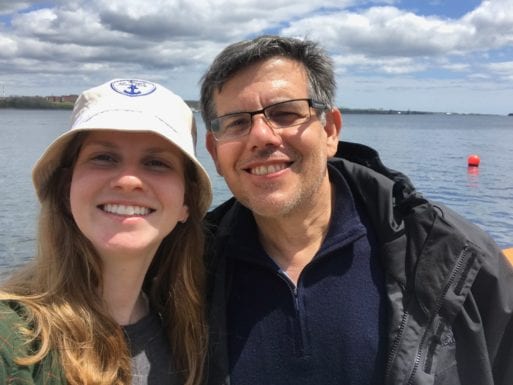
Today SevenPonds continues our two-part interview with Dr. Paul Duberstein, a public health psychologist, professor, and Chair of the Department of Health Behavior, Society, and Policy at Rutgers University. Dr. Duberstein’s earlier work centered on identifying risk factors for suicide and depression in older adults as well as intervention studies to improve outcomes among patients with advanced, life-limiting diseases and marginalized populations. Most recently, he has been studying the measurement of “aggressive care” at the end-of-life, and has published a research paper, “Physician and Patient Characteristics Associated With More Intensive End-of-Life Care.”
Editor’s note: This interview has been edited for length and readability.
Colleen Ferguson: In part one of our interview, we discussed how certain physician attributes, like greater comfort with paternalistic decision-making, could result in more discretionary intervention at the end of life (or, as some would call it “aggressive” end-of-life care). How is this approach of examining the physician’s psychological traits different from previous research in end-of-life care?
Dr. Paul Duberstein: A lot of the research in health services is done by economists, health service researchers, and those who are interested in discovering correlates mainly in service utilization and supply. For the most part, they find things that are incredible common sensible.
For example, emergency department use is going to be more common in a place where there are more emergency centers. This is the purely economic approach to thinking about service utilization, i.e. certain interventions will be used when they’re more available or more accessible, and other interventions won’t be used because they’re not available.
But as a psychologist, my view is that there’s another reason why people do or don’t get certain services, treatment, and so on. And a lot of times, we think this comes down to the patient. But what we didn’t know was what are the implications of a physician’s psychology? And that’s what this paper examined.
Colleen: Very interesting. When looking at both the physician and the patient, do you see the more aggressive end-of-life care as something propagated by the medical community, or by the family, who perhaps don’t want to “give up” on their loved one?
Dr. Duberstein: This digs into the dilemma where doctors and their decisions are now rated by patients in the same way people who go to restaurants rate the food on Yelp. “How do you rate the comfort of your new care from 1-10?” This consumerist approach to evaluating the value of a product when it gets applied to medicine may cause physicians to do things that they would not otherwise do.
And there’s a fair amount of evidence — in fact, there’s a paper called “The Cost of Satisfaction” from UCD — where they detail some of the downsides of those decisions. They believe it causes physicians to make decisions that they wouldn’t otherwise make. These are ethical dilemmas that doctors have to deal with — the person isn’t going to live, but the family wants the doctor to do everything.
Colleen: And if they don’t, do they end up in court?
Dr. Duberstein: Doctors are rarely sued for doing too much. If they’re going to be sued it’s going to be for not doing enough. The tort system incentivizes the doctor to do more and that incentive is only amplified by other incentives like a fee for service. I’m not saying that doctors do dialysis or administer chemotherapy for money as the primary motive, but many would agree that there are some perverse incentives baked right into our health care system.
Colleen: What can people do to prevent unwanted, potentially aggressive end-of-life care from happening to them?
Dr. Duberstein: There are a couple of recommendations that have gotten a fair amount of currency recently. First, it’s important to have conversations with family members about preferences and you need documentation. The medical team will ask what the person’s preference is and that’s where documentation will help. At the end of the day, the POLST form is really the most actionable document.
The second recommendation is kind of a big-stroke solution — have a relationship with a primary care provider. This doesn’t get a lot of attention. And unlike the specialist and sub-specialist who provide hospital-based care, the individual that most patients have developed relationships with are the primary care providers. Those relationships are comprehensive and encompass the whole person in an ecological context.
When there is a life-limiting diagnosis or someone gets really sick, usually the cavalry comes in and the specialists start doing their work with the lab and specific parts of the body. But no one is paying attention to the individual. That is, except for the PCP. And patients can have more control by getting their PCP involved. I think if you talk with your PCP about these issues and make sure they’re involved in that care, I think things will go more smoothly at the end.

Colleen: Do you think we need to continue researching different facets of end-of-life care?
Dr. Duberstein: In broad strokes, we need to be thinking in more creative ways about health care utilization. It’s not just the supply of beds — it’s also about patient and caregiver attributes. A lot of times the patients know they’re dying, and it’s their family members who don’t want them to die.
There’s not a lot of empirical research on this. And there should also be more research on physician attributes affecting care, too. There has been some research by a woman at Dartmouth named Amber Barnato whose idea is that local norms drive medical decision-making. We tend to think of those things as rational and algorithmic, but a lot of medical decisions are about norms — i.e. what are we about in this clinical micro-culture?
So, it’s one thing to look at norms from a sociological or anthropological perspective, but as a psychologist, I want to ask — where do those norms come from? If they don’t come from individual psychology, then they certainly affect it. I’m not a psychological reductionist — I believe we have to take everything into account.
Colleen: This has been so interesting. Thank you so much for speaking with me today. I’m sure our readers will find your insights helpful as well.
Dr. Duberstein: You’re very welcome. It’s been a pleasure.
If you missed Part One of our interview with Dr. Paul Duberstein, please catch up here.

 Why Are Patient’s and Physician’s Psychological Attributes Important in End-of-Life Care?
Why Are Patient’s and Physician’s Psychological Attributes Important in End-of-Life Care?


 How Dare You Die Now!
How Dare You Die Now!
 Debating Medical Aid in Dying
Debating Medical Aid in Dying
 “Help Me, Helen”
“Help Me, Helen”














